THE VALUE OF PARKS
Facilities must not be taken for granted
by TurfPro Editor, Laurence Gale MSC, MBPR
It does not bear thinking about, how our lives would be without the wonderful tapestry of landscapes, trees and the urban sprawl of public open spaces.
March usually signals the start of the grass cutting season, when warm soil and air temperatures initiates the first real flush of growth of the year, enticing many of us to get our lawn mowers out of the shed and start the job of mowing our lawns.
This is coupled with a flicker of colour in the garden - particularly this year when the weather in February was exceptional and had brought about an early flush of flowering cherry trees, winter jasmine, forsythia, camelia, viburnum and heather, bringing a rich vision in our gardens.
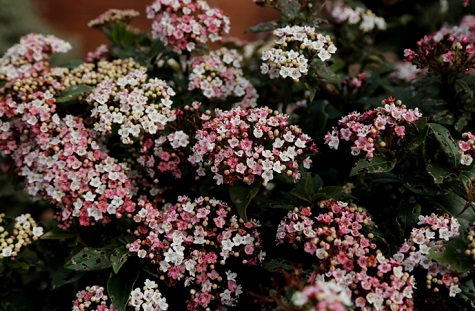
I particularly like this time of the year, seeing all the deciduous trees and hedges coming into leaf during the next couple of months. For me it’s the time of the year when our gardens, parks and open spaces come to life and remind us of the wonder of nature.
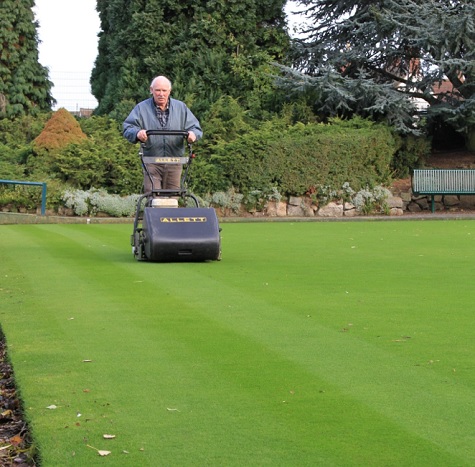
I firmly believe a section of society take for granted these parks and public open spaces, believing they will be here forever. It does not bear thinking about, how our lives would be without this wonderful tapestry of landscape, trees and urban sprawl of public open spaces.
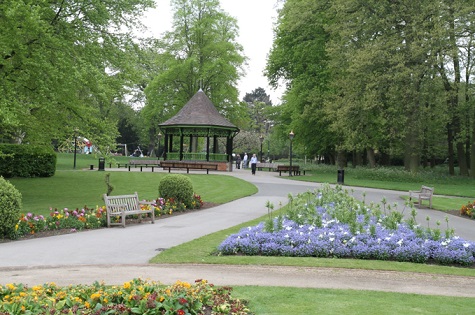
It is one of the reasons I became a Greenflag judge and each year along with another four hundred plus judges, we annually inspect the quality and management of these wonderful facilities.
The Green Flag Award® scheme recognises and rewards well managed parks and green spaces, setting the benchmark standard for the management of recreational outdoor spaces across the United Kingdom and around the world.
The aim of the scheme, that is now in its 20th year, is to ensure that everybody has access to quality green and other open spaces, irrespective of where they live. Its purpose is to ensure that these spaces are appropriately managed and meet the needs of the communities that they serve.
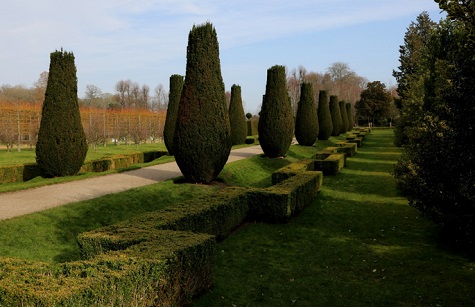
Winning a Green Flag Award® brings with it a wealth of benefits, from the status of being affiliated with a prestigious awards programme through to tangible benefits such as boosting tourism and opening up revenue opportunities.
Each year, winners receive a Green Flag or Green Flag Community Award Flag. Those with Green Heritage Site Accreditation also receive a plaque to promote the status.
As the international standard for parks and green spaces, holding a Green Flag Award® brings with it a vast amount of prestige. It is also an excellent example of civic achievement and provides communities with a great sense of civic pride.
Winning a Green Flag Award® visibly demonstrates to the local community that a clear improvement has been made to a site.
Improving facilities at a park/green space and engaging more with the local community can have a knock-on effect to the regeneration of an area.
Upgrading a site to achieve Green Flag status can, for example, bring about improvements to health and education, reduce crime and improve the general cleanliness of an area, whilst at the same time providing a boost to its profile.
Research shows that people will make special trips to award-winning sites. What's more, by holding popular events at your site, you will guarantee yourself repeat visits.
A recent report in Denmark revealed the benefits of having access to these public open spaces.
Children who grow up surrounded by green space are less likely to develop a mental health conditions in adulthood, according to a new study. Danish researchers found children who grew up with greener surroundings were up to 55 percent less likely to develop a mental disorder later in life. The number of people who live in cities is increasing and the World Health Organisation estimates more than 450 million people suffer with a mental disorder. The new study from Aarhus University in Denmark calls on city planners to design greener and healthier cities in the future to improve mental health.
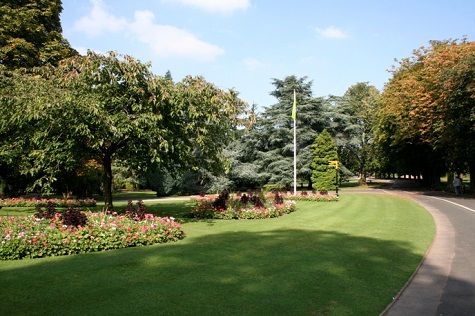
They compared the data, published in the Proceedings of the National Academy of Sciences of the United States of America, with the risk of developing one of 16 different mental disorders later in life. Children surrounded by high amounts of green space in childhood were up to 55 per cent less likely to develop a mental disorder – even when considering known risk factors such as socioeconomic status, urbanisation and a family history of mental health problems. Noise, air pollution, infections and poor socioeconomic conditions increase the risk of developing a mental disorder, according to the study. But researchers found more green space in the local area creates greater social cohesion and increases people’s physical activity levels. This can improve children’s cognitive development and impact upon their mental health.
It was during the Victorian age some 100 years that we saw some of the first city parks appear in the UK. In 1847, before a crowd of 10,000 people, the gates were officially opened to the world’s first publicly funded municipal park – Birkenhead Park. Designed by renowned gardener and architect, Sir Joseph Paxton, Birkenhead Park arose as a shining masterpiece of landscape design from what were once mere marshlands and commons.
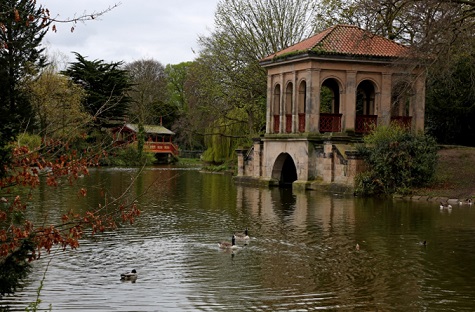
With innovative design, incorporating elements of nature and architecture from across the globe, the intention was to bring the world to Birkenhead through picturesque visions of international culture.
Birkenhead Park was established as an idealised countryside landscape of open meadows, naturalistic woodland belts and beautiful lakes, which are shaped to appear as sinuous rivers creating scenic views of iconic features such as the Roman Boathouse and Swiss Bridge.
The creation of Birkenhead Park not only marked a significant stage in human history as a response to the poor health conditions brought on by the industrial revolution; but also represented a mid-nineteenth century vision of what a city of the future should offer society, providing everyone - irrespective of social class, age or colour - the opportunity to enjoy and engage with its beauty. It was this unique feature that has provided the inspiration for the development of some of the most significant urban parks across the world.
We know that our green spaces provide multiple benefits to local communities and wider society. Our green spaces are more than just places for recreation or to help wildlife thrive – they also provide important functions to society which have an economic value.
For example, woodlands absorb pollution and lock up carbon, which cleans our air and wetlands store water, reducing flows and help reduce the risk of flooding.
These functions benefit society and help reduce costs on local and wider communities, such as to the NHS, other public sector services and local businesses. A recent study (The Value of Our Green Spaces, January 2016) by the Land Trust states our parks, nature reserves and other open spaces provide people with accessible areas where they can reap the benefits of the natural world.
Having spent the best part of my working career managing estates, public parks and open spaces I have seen at first hand the value of these assets brings to the wider community. However, it is very disturbing to see the current plight of many local authorities, who have been faced with diminishing budgets for many years due to the austerity cuts made by recent governments. Who by the way, are still not prepared to invest properly in these national assets.
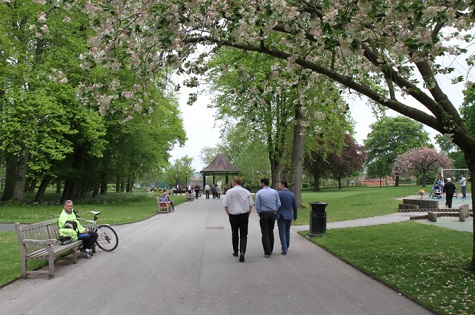
There will always be a cost to be met for the management and maintenance of these wonderful parks and open spaces, however, in real terms the actual cost of this maintenance is insignificant compared to the real value these assets bring to the community and wellbeing of the end users.
However, I am pleased to see that the UK Government this year has announced that councils across the country are to benefit from more than £13 million funding to breathe new life in to our green spaces for the benefit of all. From day-to-day maintenance costs to essential playground repairs and the creation of new green spaces, £9.7 million of new funding will give local leaders and communities resources to better maintain, protect and increase their recreational spaces.
An additional £2.75 million will also be made available for the pocket parks plus programme to support communities to take the lead in transforming their neglected and derelict spaces.
As for me, I am looking forward to this year’s Green Flag awards. They have become an essential vehicle for local authorities to maintain and retain these essential parks and public open spaces for future generations.
 |
|
 |  |
ROBOT MAKES ITS MARKS IN KENT
One of the first users in the country
Medway Norse, the Kent-based grounds and facilities management specialist, has become one of the first users of Rigby Taylor’s robotic TinyLineMarker (TLM).
Medway Norse, the Kent-based grounds and facilities management specialist has become one of the first users of Rigby Taylor’s robotic TinyLineMarker (TLM).
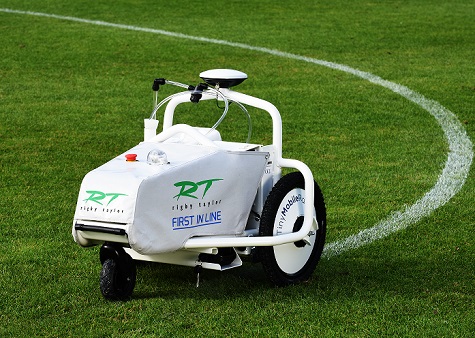
Launched at last year’s SALTEX exhibition, the company says TLM can mark a full-size football pitch in 20 minutes, compared to around 1.5 hours manually. And for Medway Norse, which has a grounds service remit that includes the maintenance of all of Medway Council’s grass playing surfaces, including 68 football pitches, “that will mean we’ll be freeing up our grounds team from line marking these pitches for at least two days a week”, says Colinda Le Gall, Operations Manager – Grounds.
“I’m being very conservative with these estimated savings, too, because I fully expect the rewards to be much greater!”
Colinda continues: “Also, as a result of needing just one person to mark the pitches using TLM – instead of two by conventional transfer wheel methods – the investment will also mean that the available resource will be able to be redeployed on other pitch maintenance tasks,” she says.
“So, for example, we will be able to carry out additional pitch maintenance all year round, rather than just the annual end-of-season renovations, and that will surely lead to better quality playing surfaces. It’s all about improving and adding services to users within the same budget model.”
The benefits of TLM don’t end there, either, says Colinda.
“Because TLM uses Rigby Taylor’s ready-to-use Impact paint [producing bright white lines that last longer than other paints], our operators will have virtually no contact with the paint either, as a flow tube is simply inserted into the paint container.
“So, we will also eliminate the need to both de-canter line marking paint from a 1,000-litre tank and mix it with water. That equates to further savings in time, labour and water, and it will make for a much cleaner, greener operation.”
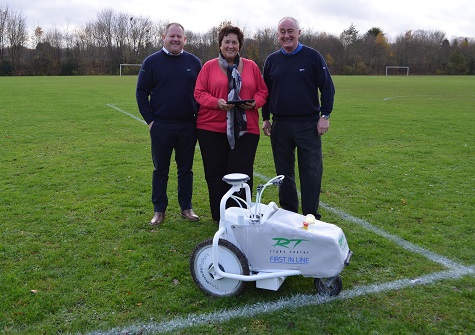
Colinda Le Gall with Rigby Taylor’s technical sales representatives Simon Hughes (left) and Roy Mellis
TLM utilises the latest GPS technology with RTK receiver and antenna that connects with global satellites and mobile network connections. It takes the input of pitch line dimensions and multiple pitches via an App and re-positions them to best fit the site using Google Maps. Once stored, the lines are never lost, even if they disappear if a pitch is not used for any length of time.
Initial marking of a standard size football pitch takes less than 20 minutes - “Our initial marking of 68 pitches used to take around four weeks”, says Colinda, “but will now take just one week” - including all perimeter lines, penalty boxes, the ‘D’, centre circle, corner angles and penalty spot all with just one touch on the tablet control. Even pitches with fixed post sockets can be marked.
The company says TLM is able to mark football pitches (any length/width), and rugby union and league pitches as well as multi-lane athletic tracks, tennis, lacrosse and American football pitches, all with no need for formal measuring.
TLM can arrive on site and mark standard and bespoke shapes, which is often required for some smaller locations and events such as school sports days, fetes and even boot fairs, marking car parking on the fields.
Medway Norse – a joint venture with Medway Council and the Norse Group - has been watching robotised line marking developments for the past few years, says Colinda, “and we are confident that Rigby Taylor has arrived at the ultimate cost-effective and highly-efficient solution”.
She concludes: “While we also expect that TLM will eventually also be applied to the two grass tennis and the pair of cricket pitches we maintain [two bowls greens are also under Medway Norse’s wing], we are also confident that the expertise of our line marking and overall grounds maintenance will attract additional business, from local schools, sports clubs and our neighbouring councils”
 |  |
CHARTERHOUSE SUPPORT BIGGA EDUCATION
Providing educational opportunities
Charterhouse will help provide valuable professional development opportunities for BIGGA members.
Charterhouse Turf Machinery has joined forces with the British & International Golf Greenkeepers Association to provide educational opportunities for golf course professionals nationwide.
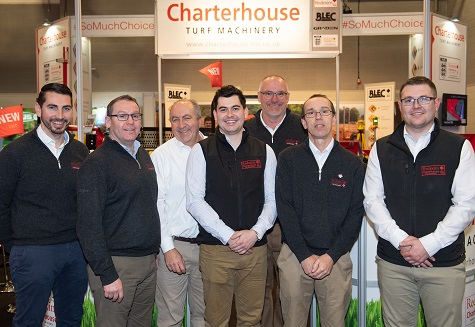
The Charterhouse team pictured at BTME 2019
In its new capacity as Education Supporter for the association, Charterhouse will help provide valuable professional development opportunities for BIGGA members.
Commenting on the new agreement, Charterhouse sales manager Nick Darking said, “We have been a supporter of BIGGA for many years, in many different guises, including a number of years as sponsors of the annual National Championship. We are proud to now be working alongside BIGGA as an education supporter, helping to provide valuable professional development and educational opportunities to those in our greenkeeping industry.”
BIGGA business development executive, Lauren Frazer, said, “With their extensive expertise providing valuable tools for the modern greenkeeper, Charterhouse Turf Machinery has long been a proud supporter of BIGGA members, including as title sponsor of the BIGGA National Championship. In conversation with Nick and the Charterhouse team, it was clear they wanted to build on that relationship and find a way to help greenkeepers all over the country to achieve new heights and I’m delighted that we’ve been able to sign this agreement, which will enable that to happen.”
 |  |
DOUBLE A ON COURSE AT DUMBARNIE LINKS
Supplying grow-in & maintenance machinery
John Deere dealer Sandy Armit of Double A has signed a partnership deal for the £11 million project with OB Sports Golf Management, the US firm hired to manage Dumbarnie.
Dumbarnie Links is a brand new 18-hole golf course development on the south coast of Fife that is set to be open for play by spring 2020. The 165ha development reflects the historical location of a links course and sports club at Dumbarnie dating back to the 1830s.
Luke Beardmore of OB Sports Golf Management - the US firm hired to manage Dumbarnie - and John Deere dealer Sandy Armit of Double A signed a partnership deal last year for the supply of grow-in and maintenance equipment for this exciting £11 million project, which is supported by the local landowner Lord Balniel of Balcarres.

A drone shot of Dumbarnie Links in the early stages of development
Sandy Armit of Double A said, “This is a very exciting project and we are very pleased to have been chosen to be involved with the initial loan and supply of John Deere equipment, including hire tractors and a ProGator utility vehicle with mounted sprayer and spreader.
"We look forward to phasing in a full fleet of course maintenance equipment through the grow-in period this year, in preparation for the course’s official opening in 2020.”
Designed by former Walker Cup and Ryder Cup player Clive Clark, Dumbarnie Links is notable for featuring sea views on all 18 holes. The course manager is local man Grahame Taylor, who grew up in Leven and came from the Old Course at nearby St Andrews.
“The vision for Dumbarnie Links has been to provide a first class, true links style golf experience of international quality for all to enjoy,” said Luke Beardmore. “The golf course will be operated as a pay-and-play facility, with no members’ club or fees, and will be open to the public for a daily green fee. It has been designed and laid out to the highest standard while also respecting the coastal setting and environmental designations within the vicinity.”

A John Deere ProGator with spreader at work during the grow-in phase at Dumbarnie Links
Largo Bay to the south of the site forms part of a wider designated Site of Special Scientific Interest (SSSI), Special Protection Area (SPA) and Wetland of International Importance (RAMSAR Site). The Fife Coastal Path and Dumbarnie Links Scottish Wildlife Trust Reserve are also adjacent to the site boundaries.
“Due to extremely favourable weather conditions last year the golf course construction work took just six months to complete, which is extremely fast,” said Luke. “The contractor, Landscapes Unlimited from the US, assembled a team of first class sub-contractors to build the course so quickly. The course will still need to mature throughout 2019, but so far the project has truly exceeded everyone’s expectations.”
Luke Beardmore feels that John Deere has been at the forefront of the project’s success so far, adding: “Our initial success has largely been based on our strong working relationship with John Deere, and specifically the dealer Double A. The ability for Dumbarnie to work with the dealership team allowed us to keep the preliminary costs down while still focusing on the highest quality standards every day. This partnership has truly been a win-win for everyone.”
 |  |
SALTEX REPORT STRONG 2019 SALES
70% of floorplan allocated
More than 180 SALTEX 2018 exhibitors are returning, with over 40 of these increasing the size of their stand plus a further influx of debut exhibitors.
Now in its 74th year, the organisers of SALTEX say the show is growing from strength to strength in its NEC home.

They report that already 70 per cent of the SALTEX 2019 floorplan has been allocated with more than 180 SALTEX 2018 exhibitors returning. Over 40 of these exhibitors have increased the size of their stand and a further influx of debut exhibitors are looking to engage with the show this year.
Campey Turf Care Systems for example say they will be building on their success at SALTEX 2018 by upgrading its stand and showcasing an even wider range of turf machinery.
"The SALTEX exhibition has proved it is still popular with the professional groundsperson attracting visitors from both here and abroad. Last year we trialled a smaller stand with an area for seating and refreshments for our visitors. This was very successful, so this year we are taking a larger stand to create an even more welcoming space for our customers while at the same time increasing the number of machines on display," said managing director Richard Campey.
Lister Wilder is a new exhibitor for 2019 and division sales director Phill Hughes has announced that the company will be using its first appearance at the NEC as an opportunity to promote its hire division.
“I’ve been monitoring show attendance and feedback prior to making a commitment. My view of last year was that it felt like there was a level of excitement around the manufacturers. The customers attending appear to be of good quality and in good spirit, something which I believe has been achieved by combining the IOG Awards with the show.
“Over the last few years we have seen a rise in the number of commercial fleet customers looking for both long and short-term hire as an alternative to purchasing assets and we look forward to promoting our commercial hire division to a wider audience in order to increase our current customer base.”
SALTEX 2019 takes place at the NEC, Birmingham on October 30 and 31.
 |  |
THREE YEAR WETTING AGENT PROJECT
Unveiled by ICL
ICL has started a research project exploring the use of wetting agents to further improve water use and to potentially help optimise nutrient use for managed amenity turf.
ICL has started a research project exploring the use of wetting agents to further improve water use and to potentially help optimise nutrient use for managed amenity turf.
It is a three-year research project delivered through the Centre for Global Eco-Innovation, Lancaster University. The Centre is part funded by the European Regional Development Fund and is supporting local sports field construction specialists J Mallinson in collaboration with surfactant specialists at ICL.
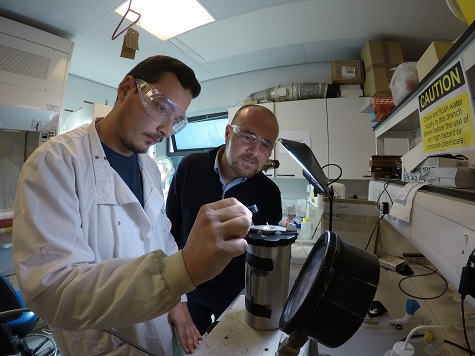
Dr Andy Owen (ICL international technical manager) has been instrumental in planning the project. “I have known the research team here at Lancaster Environment Centre for a number of years and the chance to collaborate and generate useful research optimising inputs to turf through wetting agent use is invaluable.”
Graduate researcher Vasileios (Billy) Giannakopoulos is working under the supervision of Dr Jaime Puertolas and Professor Ian Dodd. Billy was selected ahead of a number of other applicants to embark on the three-year project and said “I’m delighted to be a part of this project as this kind of research has never been undertaken until now. It is such an interesting and relevant topic, with the potential to make a real difference for turf and crop management.”
The project will be utilising ICL’s H2Pro range of wetting agents which includes TriSmart, AquaSmart and FlowSmart and the research team will be using these products in a series of experiments, both laboratory, glass house and field-based.
A year has already passed on the three-year project and Dr Puertolas believes that some new ground-breaking information could well be on the horizon.
“Understanding surfactants and what they do is a very interesting subject, we normally modify the soil moisture by how we place the water through irrigation type or the
frequency of the irrigation application but this is another way of manipulating how the water is distributed in the soil.”
“We hope to generate information which could improve irrigation effectiveness and better understand water and nutrient movement through a soil and uptake by a plant.”
“Working with J Mallinson and ICL is a win-win situation because we can deliver research in our line of expertise but also connect with industry practice; that is really important to us because it covers two of our aspirations – to be more environmentally friendly and to continue to innovate.”
Lana Farren, Research Manager for ICL, believes that the research is being carried out at an incredibly appropriate time. “The world is becoming more and more environmentally aware. The reality is that demand for water is increasing with large volumes being used for irrigating crops and amenity turf.
"We also lose a lot of applied nutrients through leaching which can be environmentally damaging. If we can improve water and nutrient use efficiency then ultimately, we are becoming more sustainable.”
Prof Dodd commented, “Providing sufficient water for crop production is a major challenge in many parts of the world. Even in the UK it can be difficult to assure this, as crop water use peaks in the summer when water availability in the environment can be limited, as we’ve seen this year.
"This project is one of a number that have been funded in Lancaster’s Plant & Crop Sciences research group via the Centre for Global Eco-Innovation, and it is heartening to see such engagement between academics and industry to develop real-world solutions.”
Andy feels that as a global supplier of turf and agricultural products, ICL has a certain responsibility to conduct such vital research. “ICL will continue to invest in good quality
independent research that helps support our products. We recognise that water and nutrient use efficiency is critical for crop management worldwide, so this research is vitally important.”
“Our wetting agents are used both in sports turf and agriculture and ultimately we want to be able to support the whole range with robust data, so we can market them responsibly.”
 |  |
EGO AWARDED BEST BUY
From BBC Gardeners' World
The EGO Power+ LM1903E-SP 47cm Self-Propelled Mower has been awarded one of the magazine's best mid-price mowers, scoring it 19/20 and reporting on the ease of use.
EGO say they are pleased to once again be bestowed an independent ‘Best Buy’ award for its range of outdoor power tools.

BBC Gardeners’ World rated the EGO Power+ LM1903E-SP 47cm Self-Propelled Mower one of its best mid-price mowers, scoring it 19/20 and reporting on the ease of use.
The mower, which is new for the 2019 season and uses the brand’s 56V Arc Lithium battery, was trialled head-to-head with other established brands, coming out as one of the top on test.
With the write-up, in the March issue of the magazine, now on newsstands, the company believe it puts the newly launched model in a great position from the off.
Steve Roskell, marketing director (EMEA) at EGO, said, “Since our launch, we have been awarded numerous independent ‘Best Buys’ throughout Europe reflecting our position as the experts in the field of cordless technology in outdoor power equipment.”
NEW WEBSITE LAUNCHED
For Simon Richard Ltd
New site covers Reform bank tractor, Muthing flails and Woods rotary cutter ranges.
Simon Richard Ltd, UK agents for the Reform bank tractor, Muthing flails and Woods rotary cutter ranges have launched their new website.
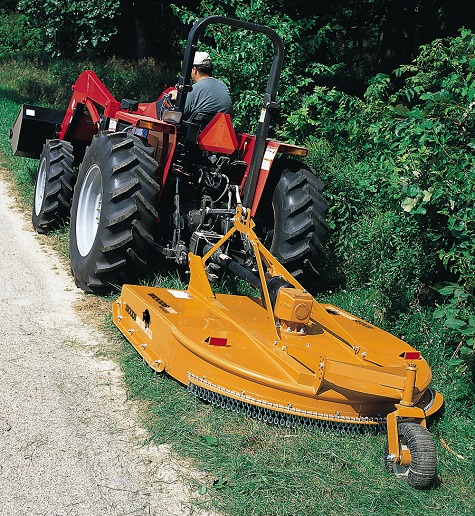
Simon Richard said, "The new website is now up and running with lots of new machines on view including the Woods full range, all now available in the UK."
Visit www.slopemower.co.uk
|
 |  |
LOOKING FOR A CAREER WITH A BRIGHT FUTURE?
John Deere dealerships across the country offer exciting opportunities working with the latest technology
We are recruiting technicians, parts personnel, parts & service apprentices and sales staff.
We’re a company that values practical skills, problem solving, team work and initiative. We are recruiting
- technicians
- parts personnel
- parts & service apprentices
- sales staff.
Visit our website www.JohnDeere.co.uk for details and how to apply.
Email us 31enquiries@johndeere.com
ADVERTISE YOUR JOBS HERE
Amazing success rates!
Advertise your recruitment needs on TurfPro Weekly Briefing and reach our targeted audience of recipients every week.
Contact Nikki Harrison for details - 01491 837117
|
 |  |
|
TIME TO SAFEGUARD HERBICIDES
Safe and timely use of herbicide products not only helps to ensure that active ingredients fulfil the requirements of amenity managers, but can also help to safeguard their future availability and effectiveness, points out Bayer.
Safe and timely use of herbicide products not only helps to ensure that active ingredients fulfil the requirements of amenity managers, but can also help to safeguard their future availability and effectiveness, points out Bayer.

Roundup® Development Manager Barrie Hunt explains: “Glyphosate has been reapproved until at least 2022 and we now need to play our part to ensure that we continue to have this important herbicide at our disposal to control weeds in the amenity sector in the long term.”
Good Plant Protection Practice and an Integrated Weed Management Strategy are key to demonstrating stewardship and responsible use of plant protection products which can help safeguard active ingredients, he comments.
“Whenever possible, use mixtures of herbicides, and consider integrating non-chemical control measures,” explains Mr Hunt. “Opportunities for selective applications are limited in groundcare, but spot spraying can be an extremely effective approach and application equipment technology is developing all the time.
Incorporating a residual partner with a different mode of herbicidal action is also possible in some circumstances.”
The mild winter has meant continued growth in many parts of the country, but groundcare professionals should resist the urge to make an early start on weed control, he emphasises.
“Timeliness is essential to get the best out of products – check label recommendations for the correct application timing for the weed species being targeted. Planning applications carefully to ensure that the active ingredient is at its most effective helps to prevent survivors.”
Effective treatment of weeds also helps reduce the risk of herbicide resistance, a looming threat to our ability to maintain control, says Mr Hunt.
“There are currently no known cases of glyphosate resistance in the UK. However, globally, resistance has evolved due to practices including over-reliance on the same herbicide i.e. glyphosate, not following label recommendations and a lack of, or limited, Integrated Weed Management strategies.”
“By being vigilant, and keeping good practice to the forefront, we can help these valuable chemicals to continue to maintain the quality of sporting and leisure facilities.”
For further information on Roundup® contact the Technical Helpline on 01954 717575. Email: technical.helpline.uk@monsanto.com Web: www.monsanto-ag.co.uk
Roundup® is a registered trademark of the Bayer Group.
 |
|
 |  |
 |  |
|
|